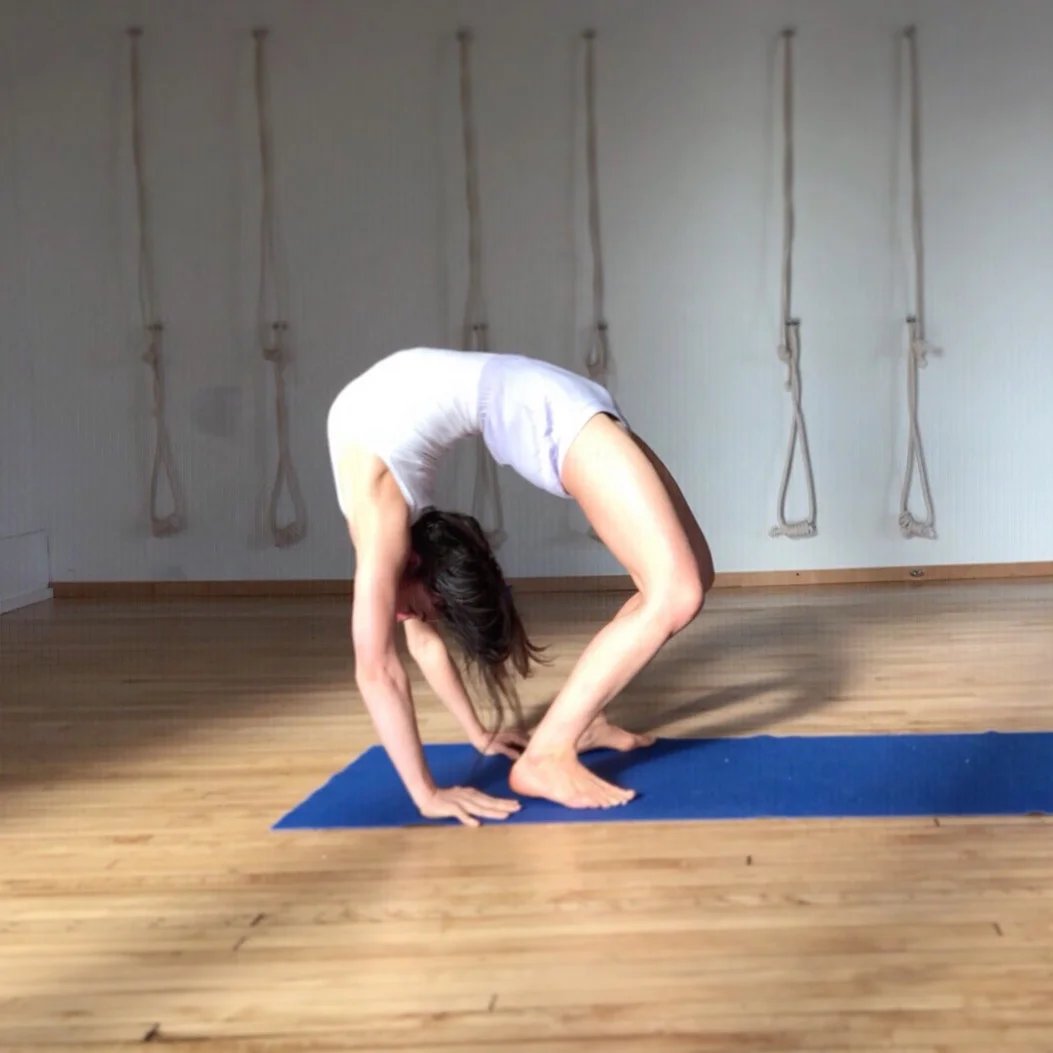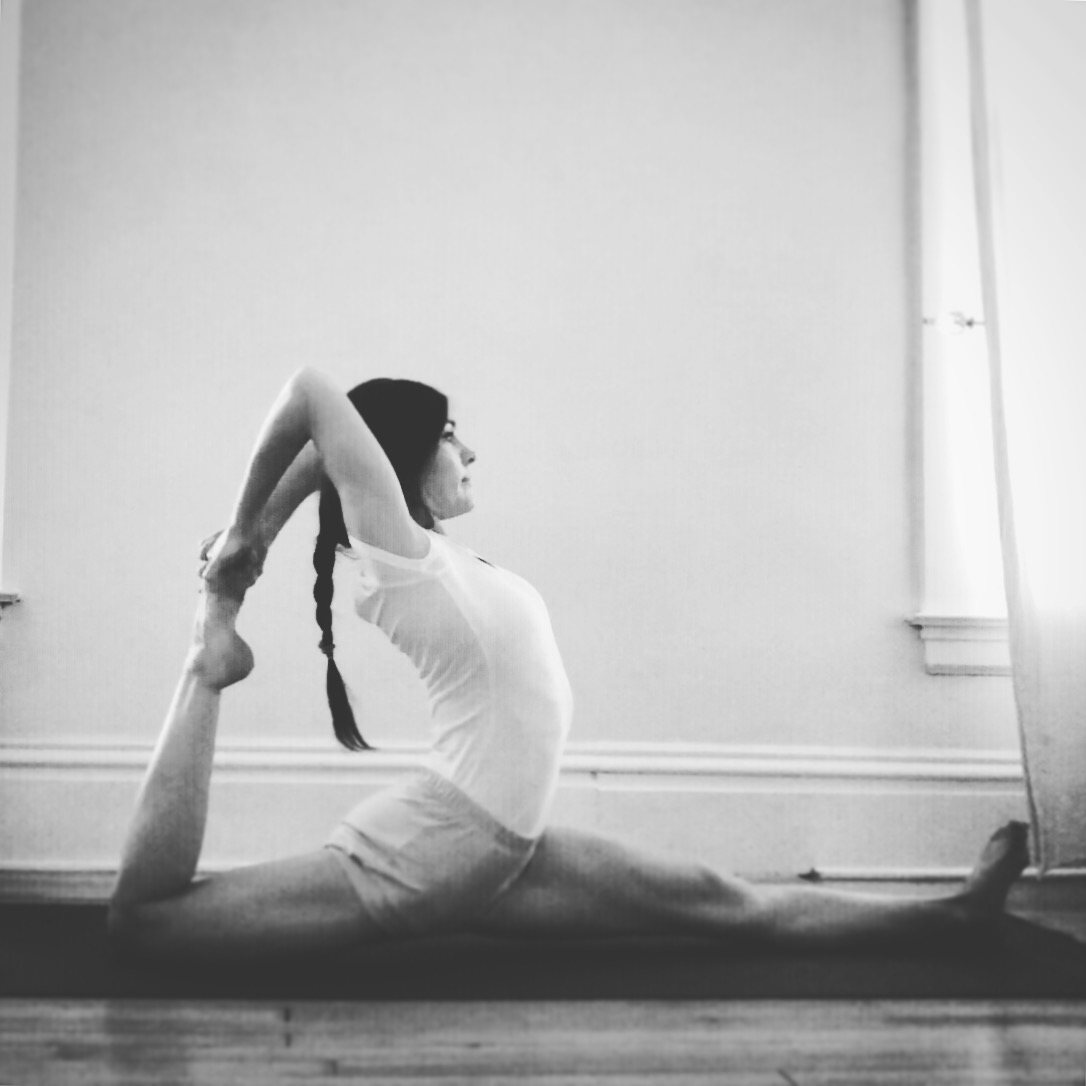“Don’t be satisfied with borrowed light.
Let your brow and your face illuminate with union.”
Rumi, IV. 3240.
Preparation for Ūrdhva Dhanurāsana II from Tadāsana.
Your Custom Text Here
“Don’t be satisfied with borrowed light.
Let your brow and your face illuminate with union.”
Rumi, IV. 3240.

Preparation for Ūrdhva Dhanurāsana II from Tadāsana.
“The gradual involution of the senses and stilling of the mind with the aid of the breath make the practitioner fit for concentration and meditation. Involution means “tuning in”... Consciousness (citta) and vital energy (prana) are in constant association. Where consciousness is focused, there must be the energy of prana too, and where you direct the energy of prana, consciousness follows. Consciousness is propelled by two powerful forces, energy (prana) and desires (vasana). It moves in the direction of whichever force is more powerful. If breath (prana) prevails, then desires are controlled, the senses are held in check, and the mind is pacified. If the force of desire gets the upper hand, the breath becomes uneven, and the mind becomes agitated. These are things you can actually observe, just as you observe right measure and balance in Asana, and this is why and where the practice of yoga brings self-knowledge (svadhyaya). You will not reach knowledge of the divine Self without passing through self-knowledge. Your practice is the laboratory, and your methods must become ever more penetrating and sophisticated. Whether you are in Asana or doing Pranayama, the awareness of the body extends outward, but the senses of perception, mind, and intelligence should be drawn inward.” ~~Yogacharya BKS Iyengar, Light on Life, p. 102, on Pratyahara from the chapter on Vitality—The Energy Body.~~
.

Eka Pada Ūrdhva Dhanurāsana ~~ One Legged Upward Bow Pose. With support of the forearms against two blocks and the wall.
“The body itself is a screen
to shield and partially reveal
the light that’s blazing
inside your presence...
A secret we sometimes know
and then not. “
—Rumi, V. 234-6.
Patañjali Yoga Sutras:
1.3 Tada drastuh svarupe avasthanam ~~then the seer swells in her own true splendor
1.4 Vrttih svarupyam itaratra. ~~At other times the seer identifies with the fluctuating consciousness.

Pasāsana ~ noose pose
“In art, self-discipline and right application in effort act as the two wings of the artist by which he rises to lofty heights. Effort is the propelling force which spurs one with the power of will and strength to start on one’s chosen art. It is an energetic endeavor to combat weaknesses, moods and pessimism. Effort is of two types, mechanical and dynamic. Mechanical involvement is repetitious; it is habit forming and brings some mobility but no enlightenment. Dynamic effort is total, signifying a single-minded and intense approach.”
—Yogacharya BKS Iyengar, Art of Yoga, p. 27.
A deep silence revives the listening...
Like the ground turning green in the spring wind.
Like birdsong beginning in the egg.
Like this universe coming into existence,
the lover wakes, and whirls in a dancing joy,
then kneels down in praise.
Rumi, III, 4691-3.

Parivrttaikapada Śīrsāsana
one-legged or split-legged revolving headstand
“The advantage of sustained and dedicated practice over time (tapas) is that it creates lasting results. What we do over time removes what we have created over time. We cannot leap to freedom in one bound or one immersion in a holy river. This is a dream, an illusion. Resurfacing ego will always grab us back. The immersion is a beginning and a declaration of good intent. We wash away our stains and heal our wounds and frailties over many minutes, in many hours, in many years of sustained, mindful application... The point we are seeking to reach is where we can act directly in the present. Direct action stems from direct perception, the ability to see reality in the present, as it is, without prejudice, and act accordingly. This is what it truly means to live in the present moment.” —BKS Iyengar, Light on Life, p. 136-137.
Mūlabandhāsana
Mūla is root/base or beginning /foundation
Bandha means a bond, posture or fetter
“The practice you do in yoga class is not, strictly speaking, yoga practice. The reason for this that in a class, although you are undoubtedly “doing” and, hopefully, learning, you are subordinate to the teacher. The directing intelligence comes from him, and you follow to the best of your ability. At home, on the other hand, it is your own intelligence that is the master, and the progress that you make is yours and will be maintained... It comes from you, and it’s effect profound. This is not Yoga by the body for the body, but Yoga by the body for the mind, for the intelligence.”

Tiriang Mukhottānāsana ~~intense stretch facing reverse pose
“Look and look again.
The world is not just a little thrill for the eyes.
It’s more than bones.
It’s more than the delicate wrist with its personal pulse.
It’s praising.
It’s giving until the giving feels like receiving. ”
“Art is at all times an exacting muse, never satisfied. No sooner is a goal attained than the next one appears in view. It is a never-ending process: as one crosses beyond the known, the unknown, too, recedes in the distance. The known has a frontier, whereas the unknown is limitless, boundless. So art is limitless.” Yogacharya BKS Iyengar, Art of Yoga p. 26.

Eka Pada Rajakapotasana IV. One legged king pigeon pose variation 4 (easy stage)
FOREST HILLS, MICHIGAN | Jennifer@iycgr.com